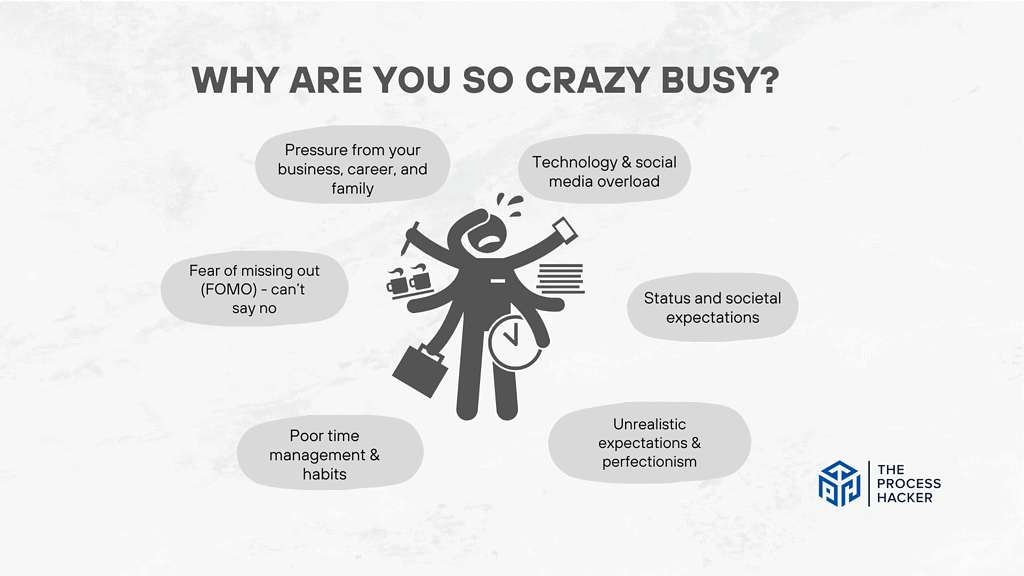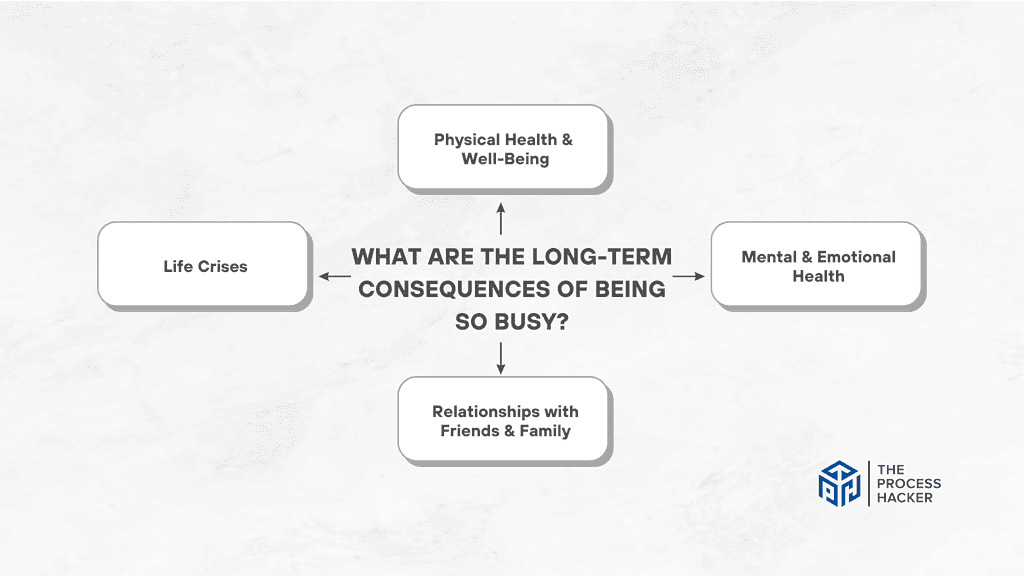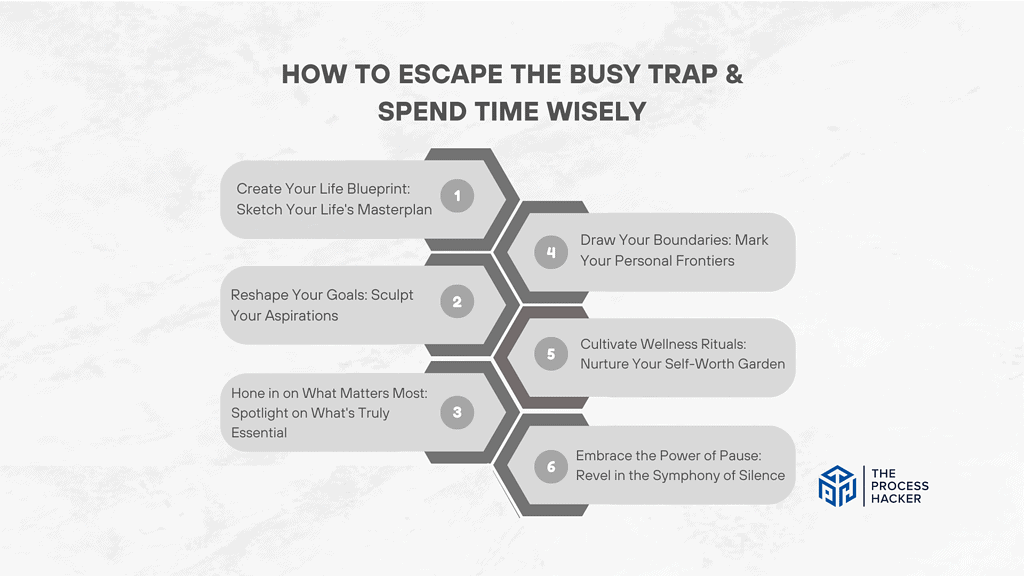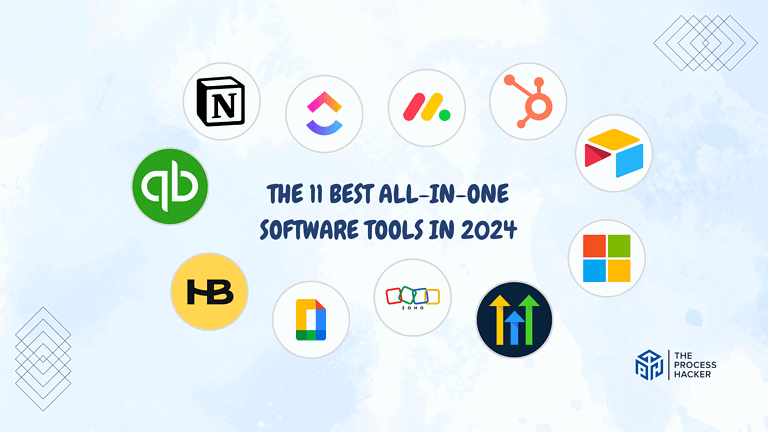How To Get Out Of The Busy Trap
Are you feeling overworked and overwhelmed in this crazy modern world? How long ago has it been since you had a break?
It’s easy to get caught up in the hustle of life. But it doesn’t have to be that way!
With my guide on ‘How To Get Out Of The Busy Trap,’ say goodbye to busy mode for good! This step-by-step method will teach you how to be less busy and regain control of your day so you can focus on what is truly important.
I understand how hard it is to balance work with other parts of life – family, friends, and simply having time for yourself! Discover proven strategies that thousands of others have used to learn how to reclaim a sense of calmness despite all the chaos.
Don’t waste another minute stressing and evidently forgetting about not having enough hours in the day! And don’t leave your dreams unattended anymore!
Keep reading to learn how to beat the busy trap today!
What Is The Busy Trap?
The “Busy Trap” refers to the modern phenomenon in both the entrepreneurial and corporate world, where people feel compelled to fill their schedules with tasks and activities. The default response is that there is little to no room for rest, relaxation, or personal growth at the present moment.
It’s like you’re constantly chasing deadlines, juggling multiple responsibilities, and always feeling like there’s not enough time in an entire day. This constant state of busyness can lead to stress, burnout, and a decrease in overall life satisfaction.
If this sounds familiar, you’re caught in the busy trap.
Why Are You So Crazy Busy?

It feels like the world is spinning faster than ever, right? The demands from your career, personal life, and even societal expectations can leave you feeling overwhelmed and stuck in a never-ending cycle of busyness.
So why are you so crazy busy? Here are some of the reasons:
- Pressure from your business, career, and family: The constant juggling between professional responsibilities and personal obligations leads to a whirlwind of busyness.
- Technology & social media overload: The incessant digital connection that blurs the boundary between work and rest, contributing to a sense of perpetual activity.
- Status and societal expectations: The societal pressure to appear constantly busy indicates success and worth, trapping you in a cycle of ceaseless action.
- Unrealistic expectations & perfectionism: The quest for flawlessness that can lead to overworking and an unmanageable schedule.
- Poor time management & habits: Inefficient practices like procrastination or multitasking amplify the feeling of being overwhelmed and crazy busy.
- Fear of missing out (FOMO) – can’t say no: The inability to decline opportunities or invitations due to the fear of missing out, leading to over-commitment and undue stress.
But here’s the thing – being busy isn’t necessarily synonymous with being productive or fulfilled.
The truth is escaping this “Busy Trap” is more than just necessary. It’s crucial for your mental health, productivity, and overall happiness.
But how do you break free? That’s where this post comes in. I’ll guide you through understanding the root causes of your busyness and provide practical strategies to reclaim control over your time and life.
Pressure From Your Business, Career, and Family
Despite the joys they bring, your business, career, and family can also be major sources of stress. It is overwhelming to try to handle all of them simultaneously.
For instance, you might feel pressured to meet a work deadline while juggling family obligations like attending your child’s recital or caring for an elderly relative. This constant tug-of-war between different aspects of your life can leave you feeling stretched thin and perpetually busy.
Technology & Social Media Overload
In the era of smartphones and social media, we’re constantly connected. While this can have benefits, it also means that work emails, notifications, and updates are only a tap away.
For example, you might check emails during dinner or scroll through social media when you should sleep more than four hours a day or do the same during morning hours as soon as you open your eyes. This constant digital connection can create a sense of always being “on,” contributing to the trap.
Status & Societal Expectations
Society often equates busyness with success. You might feel the need to pack your schedule to appear productive, accomplished, or important.
For instance, when someone asks how you are, you might instinctively respond with “busy,” as if it’s a badge of honor. This societal pressure to always be doing something can trap you in a cycle of perpetual business.
Unrealistic Expectations & Perfectionism
If you’re a perfectionist, you might excessively spend time on tasks to ensure they meet your high standards.
For example, you might spend hours tweaking a presentation or redoing a task until it’s “perfect.” This quest for perfection can lead to overwork and an unmanageably busy schedule.
Poor Time Management & Habits
Poor time management habits, like procrastination or multitasking, can make you feel busier than you actually are. For instance, if you consistently put off tasks until the last minute, you’ll likely rush to complete them, creating unnecessary stress and a sense of busyness.
Fear of Missing Out (FOMO) – Can’t Say No
Lastly, FOMO can lead you to over-commit yourself. Whether accepting every social invitation or taking on additional work projects for fear of missing out on opportunities, this can quickly fill up your calendar and overwhelm you.
For example, saying yes to a weekend trip when you already have a packed schedule can result in a frantic scramble to fulfill all your commitments.
What Are The Long-Term Consequences of Being So Busy?

Being extremely busy or completely booked over a long period can have several significant consequences on various aspects of life:
Physical Health & Well-Being
Prolonged periods of busyness often lead to chronic stress, which can have numerous negative effects on physical health. This stress can contribute to issues like high blood pressure, heart disease, obesity, and diabetes.
Lack of time often leads to poor dietary choices and reduced physical activity, further exacerbating health problems. Additionally, chronic busyness serves as an eye-opener as it can disrupt sleep patterns, leading to sleep disorders or chronic fatigue.
Mental & Emotional Health
The incessant need to stay busy can also affect your mental and emotional health. Symptoms of anxiety, depression, burnout, and chronic stress are not uncommon.
Additionally, always being switched “on” leaves little space for relaxation, introspection, and self-care, which are vital for maintaining sound mental health.
Relationships with Friends & Family
Being overly busy can strain personal relationships. When work ethic or other commitments take up most of one’s time, it leaves little room for family and friends, weakening connections and feelings of isolation or guilt.
Your children and partner might feel neglected, leading to tensions and conflicts. Additionally, the stress and irritability caused by busyness can make interactions with loved ones less enjoyable and more confrontational.
Life Crises
In the long term, chronic busyness can make it difficult to handle life crises effectively. When one’s schedule is already at capacity, any additional stressor, like a family emergency or a personal health issue, can feel overwhelming.
This can lead to ineffective crisis management and increased susceptibility to crises due to a lack of preparedness or flexibility in one’s schedule.
How to Escape The Busy Trap & Spend Time Wisely

I’d like to introduce you to a unique process that’s helped me escape the grips of constant busyness. This isn’t just about ticking off tasks on your endless to-do lists; it’s about creating a meaningful and fulfilling life.
Allow me to guide you through these six steps:
- Create Your Life Blueprint: Sketch Your Life’s Masterplan
- Reshape Your Goals: Sculpt Your Aspirations
- Hone in on What Matters Most: Spotlight on What’s Truly Essential
- Draw Your Boundaries: Mark Your Personal Frontiers
- Cultivate Wellness Rituals: Nurture Your Self-Worth Garden
- Embrace the Power of Pause: Revel in the Symphony of Silence
Now, let’s delve deeper into this journey. We’ll unpack each step, giving you practical ways to execute them so you can start moving towards a life that is not just busy but truly meaningful.
#1) Create a Vision For A Meaningful Life: Sketch Your Life’s Masterplan
The first step is to create a vision for a meaningful life, or as I like to call it, sketching your life’s masterplan. This involves identifying what truly matters to you – your passions, values, and dreams.
Start by taking a quiet and “present moment” to reflect. Ask yourself:
- What brings you joy?
- What are you passionate about?
- Are you really present at the moment?
- What kind of person do you want to be?
- What does a meaningful life look like to you?
Once you have some answers, write them down. This document becomes your life’s masterplan. It’s not set in stone and will likely evolve over time, but it provides a guiding light to help navigate your conscious decision and prioritize your time.
There’s no right or wrong here. Your masterplan is uniquely yours. It’s not about what others expect of you but about what you want for your life.
So dream big and sketch a masterplan that excites and motivates you.
#2) Reframe Your Work & Life Goals – Sculpt Your Aspirations
After you’ve sketched your life’s masterplan, the next step is to refine your work and life goals to align with this vision. This is what I call “sculpting your aspirations.”
Begin by examining your current goals. Do they support the vision you’ve outlined in your masterplan? If not, it might be time to reframe them. Don’t be afraid to let go of goals that no longer serve you or align with your vision.
To sculpt your aspirations, ask yourself these questions:
- What do I want to achieve in my career, personal life, and overall well-being?
- How do these goals align with my life’s masterplan?
- Am I setting these goals because they’re expected of me or because they genuinely resonate with who I want to be?
As you answer these questions, you might find that some goals need to be redefined, others might need to be replaced, and you might even discover new goals that better align with your masterplan.
#3) Prioritize What Is Most Important – Spotlight on What’s Truly Essential
Once you’ve defined your vision and refined your goals, it’s time to prioritize what’s most important. This is what I call “spotlighting on what’s truly essential.”
Start by looking at all your life tasks, commitments, and activities. Then ask yourself:
- Do they align with your masterplan and aspirations?
- Do they contribute to your overall well-being and happiness?
If not, it might be time to let them go.
Next, identify those tasks and activities that are genuinely essential. These things move you closer to your goals, align with your values, and bring joy and fulfillment. Make these your top priority.
It’s okay to say no to things that don’t serve your vision. By putting a spotlight on what’s truly essential, you can start to eliminate the noise and focus on what really matters.
#4) Set Boundaries & Say No – Mark Your Personal Frontiers
Setting boundaries is integral to escaping the trap and creating a fulfilling life. This is what I call “marking your personal frontiers.”
To do this, you need to get comfortable with saying no. It might be saying no to a task that doesn’t align with your goals, a commitment that drains you, or an expectation that doesn’t serve your well-being.
Identify the areas where you need to set boundaries:
- Are you taking on too much at work?
- Are you overcommitting in your personal life?
Once you’ve identified these areas, decide what boundaries you need to set. This could be anything from limiting your work hours to ensuring you have time for self-care each day.
Setting boundaries isn’t about being selfish. It’s about respecting your time, energy, and well-being. It’s about marking your personal frontiers and ensuring you have the space and time to pursue what’s truly important to you.
This step may feel challenging at first, but with practice, it becomes easier. And as you start to set boundaries and say no, you’ll find that you’re not just escaping the trap – you’re creating a life that truly aligns with your values and aspirations.
#5) Build Healthy Habits & Practice Self-Care – Nurture Your Self-Care Garden
Building healthy habits and practicing self-care are integral to getting out of the unhealthy system. This is what I call “nurturing your self-care garden.”
Identify the habits contributing to your physical, emotional, and mental well-being. These could be anything from maintaining a balanced diet and regular exercise routine to setting aside daily time for mindfulness or relaxation.
Once you’ve identified these habits, make them a part of your daily routine. Treat them as non-negotiable appointments with yourself. Just as you wouldn’t cancel an important meeting with a client or friend, don’t cancel your self-care time.
It’s also crucial to practice self-compassion. Understand that having off days is okay, and do not beat yourself up if things don’t go as planned. Always remember nurturing your self-care garden is a journey, not a destination.
As you cultivate these habits and prioritize self-care, you’ll begin to notice a shift. You’ll find yourself more centered, less stressed, and more equipped to handle the demands of life.
#6) Give Yourself Free Time & Embrace Boredom – Revel in the Symphony of Silence
The sixth and final step to escaping the trap is to give yourself permission to have free time and embrace boredom. This is what I call “reveling in the symphony of silence.”
Carve out periods of ‘do-nothing’ time in your schedule. It might feel strange at first, especially if you’re used to being constantly on the go, but these quiet moments can be incredibly restorative.
During this time, resist the urge to fill the silence with distractions. Instead, allow yourself to be simple. Embrace the stillness. Let your mind wander. This is your time to recharge and reset.
Embracing boredom can also be a powerful tool for creativity and problem-solving. When your mind isn’t constantly occupied, you can make connections and develop new ideas that you might not have thought of otherwise.
Reveling in the symphony of silence isn’t about being lazy or unproductive. It’s about giving your mind and body the necessary downtime to function at their best.
As you begin to incorporate these moments of silence into your life, you’ll find that you’re not just getting out of the unhealthy system – you’re creating a life that truly nourishes and inspires you.
Key Considerations For Navigating the Busyness Trap

As we’ve explored the steps to escape the trap, it’s important to remember that this is a personal journey. What works for one person may not work for another, so be open to exploring different strategies and finding what works best for you. Remember, the goal isn’t to eliminate busyness completely but to ensure that your busyness is purposeful and fulfilling.
Delegate & Outsource to Get More Free Time
Learning to delegate and outsource tasks can significantly enhance your ability to escape the unhealthy system. If there are tasks that don’t require your specific skills or expertise, consider whether they can be delegated to someone else or outsourced. This can free up valuable time that you can use to focus on what truly matters to you.
Schedule Your Free Time & Self-Care
Another critical strategy is to schedule your free time and self-care activities. Just as you would schedule an important meeting or event, schedule time for rest and relaxation, this not only ensures that you make time for these activities but also reinforces their importance.
Practice Digital Minimalism
In our hyperconnected world, digital distractions can significantly contribute to feelings of busyness. From Cal Newport’s book, you can practice Digital Minimalism to consciously reduce your use of technology. The result of less distraction will enable you to focus on high-value activities and create more space for meaningful activities.
Practice Seek Mentorship or Therapy
Lastly, don’t hesitate to seek mentorship or therapy if you’re struggling to escape this trap. A mentor can provide valuable guidance and perspective, while therapy can help you address any underlying issues that may be contributing to feelings of constant busyness. Remember, seeking help isn’t a sign of weakness – it’s a sign of strength and a commitment to your well-being.
Final Thoughts On The Busy Trap
We’ve journeyed together through the steps of escaping the trap: from sketching your life’s masterplan, sculpting your aspirations, spotlighting what’s truly essential, marking your personal frontiers, nurturing your self-care garden, to reveling in the symphony of silence.
Each step is designed to help busy people cultivate a life that’s not just about work but purposeful and fulfilling.
Remember, escaping this trap isn’t about eliminating all busyness from your life. It’s about ensuring that your busyness serves you, not vice versa. It’s about making conscious choices about how you spend your time and what you prioritize.
Why listen to me? Well, I’ve been where you are now with my ever-problematic belief that busyness is tantamount to existential reassurance, a hedge to a successful life. I’ve felt the weight of constant busyness and the frustration of feeling like I was always running but never getting anywhere.
And I found my way out of this trap through trial and error and much self-reflection. And you can, too.
Ultimately, escaping the trap is about creating a life that aligns with your values, fulfills your aspirations, and brings you joy. And that’s a life worth striving for.
So when you become less busy, plan your trip to an incredible location, sit back, relax, and enjoy your refreshing cocktails because you’re free now! Go wild and have fun!







